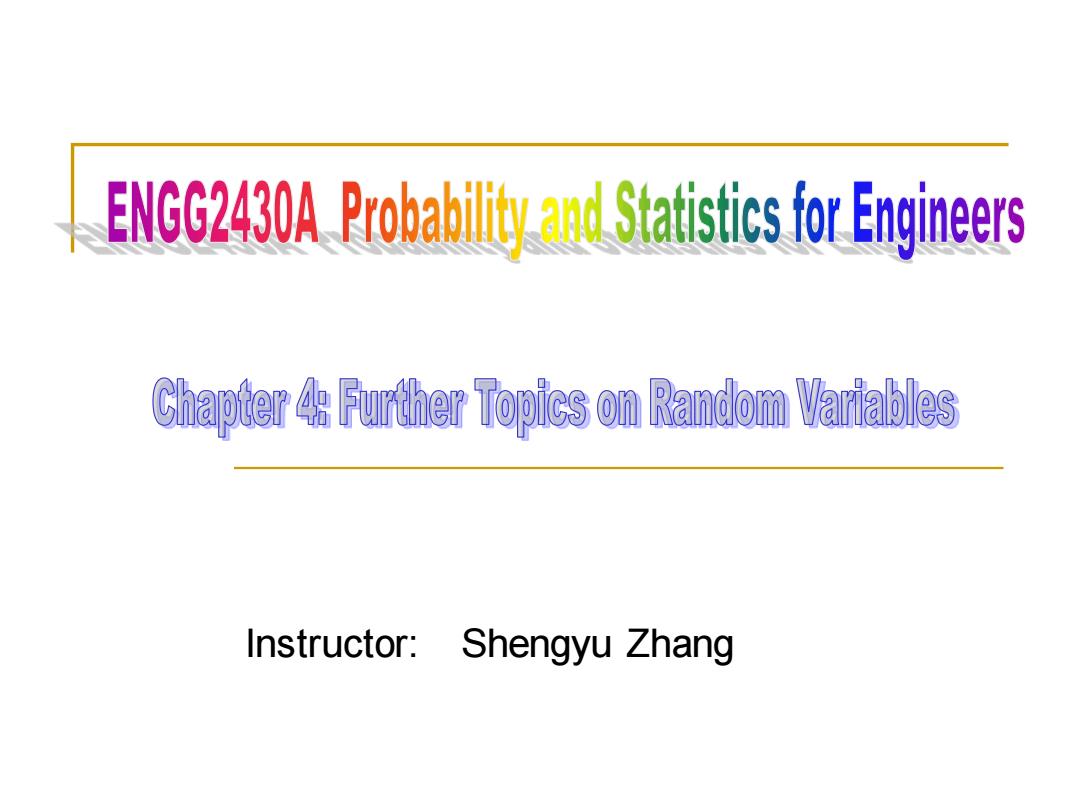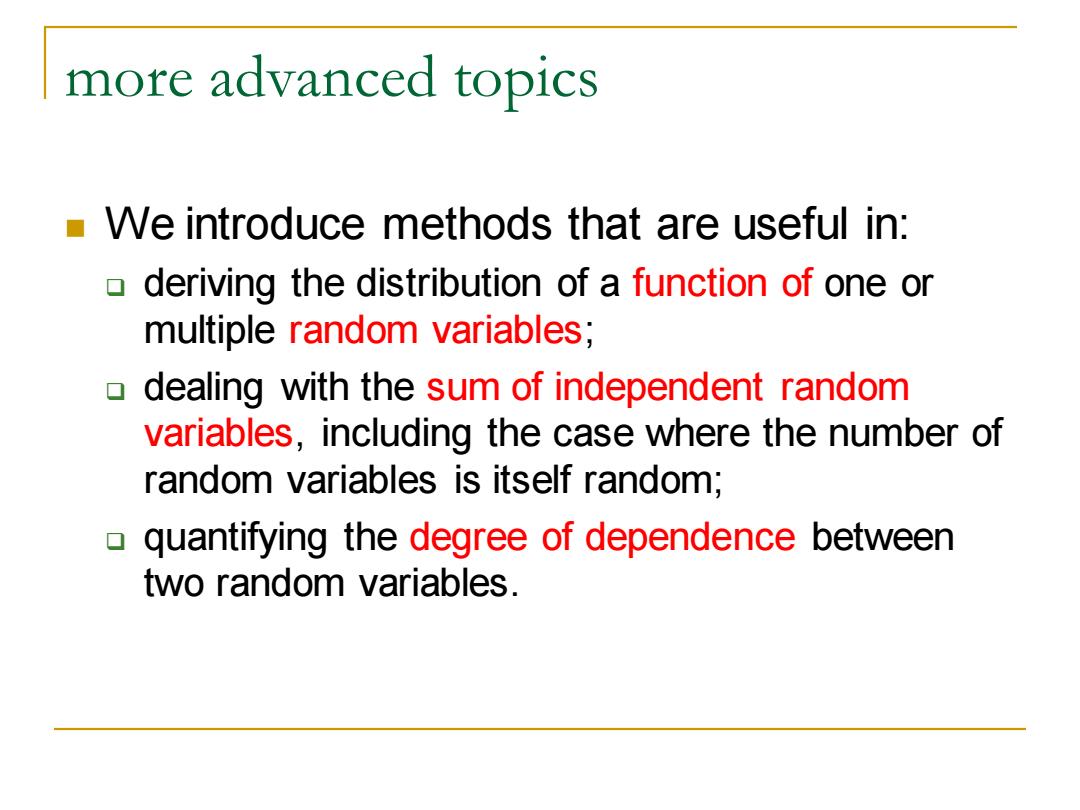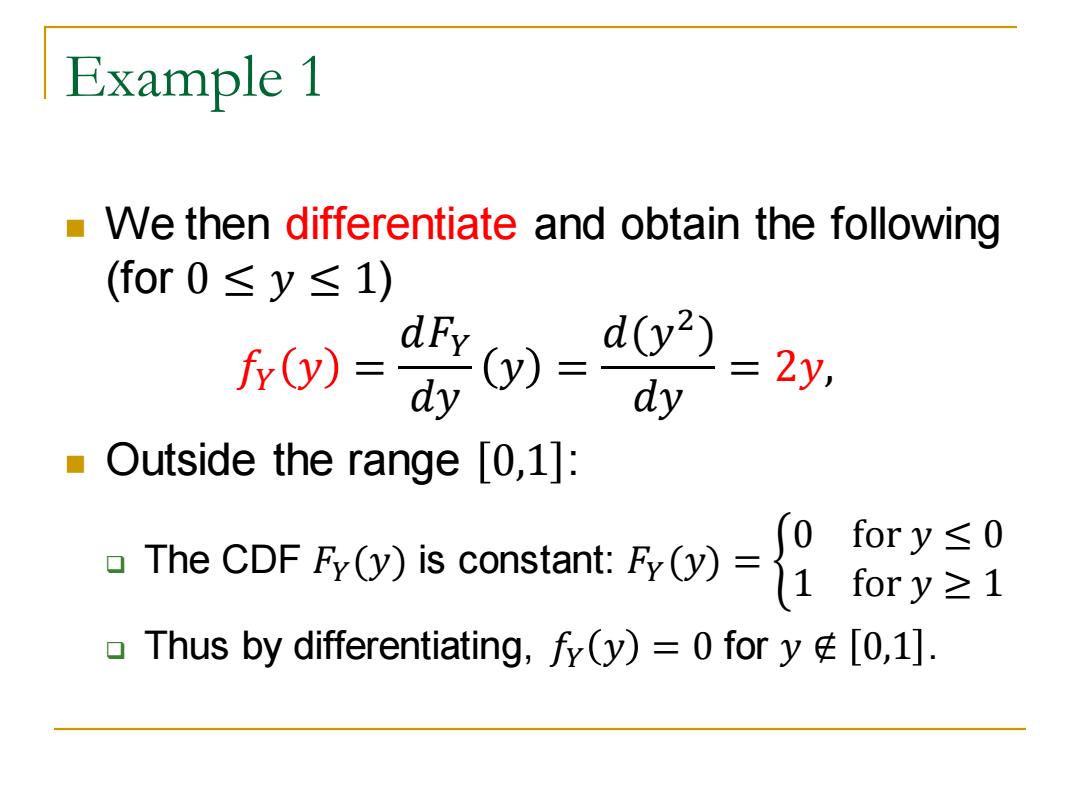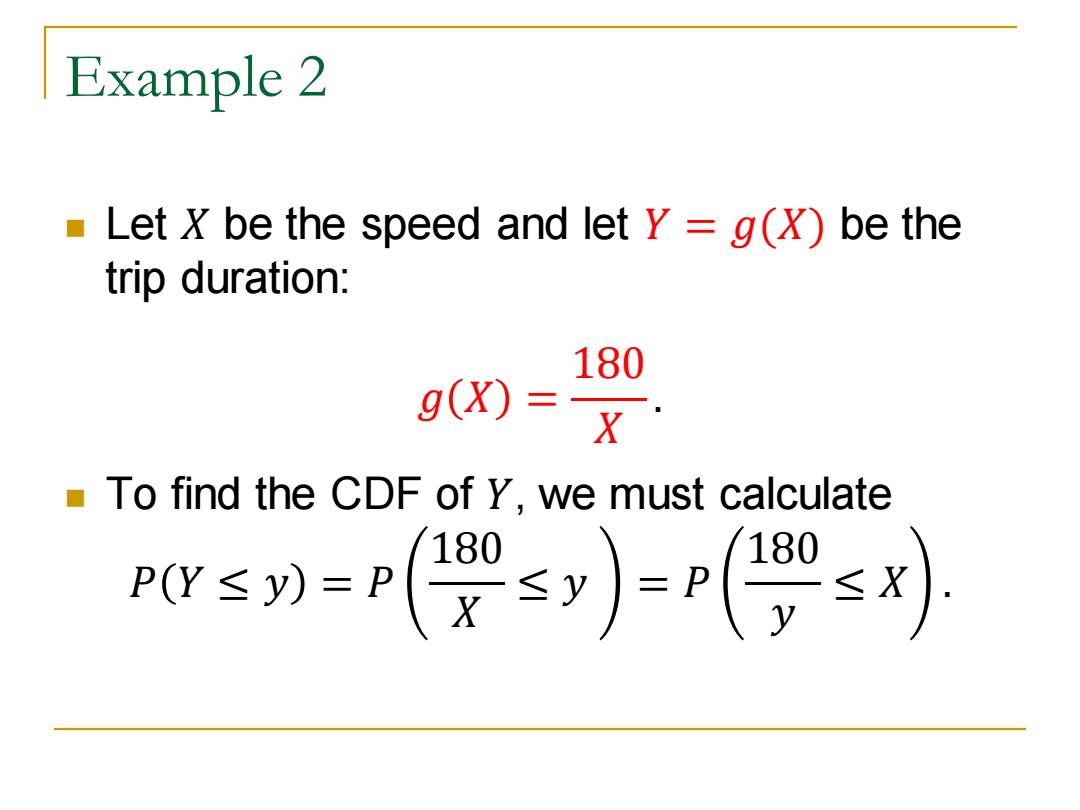
ENGG40Probataistisfor Chapter 4:Further Topics on Random Variables Instructor:Shengyu Zhang
Instructor: Shengyu Zhang

Content Derived Distributions Covariance and Correlation ■ Conditional Expectation and Variance Revisited Transforms Sum of a Random Number of Independent Random variables
Content ◼ Derived Distributions ◼ Covariance and Correlation ◼ Conditional Expectation and Variance Revisited ◼ Transforms ◼ Sum of a Random Number of Independent Random Variables

more advanced topics We introduce methods that are useful in: 0 deriving the distribution of a function of one or multiple random variables; 0 dealing with the sum of independent random variables,including the case where the number of random variables is itself random; 口 quantifying the degree of dependence between two random variables
more advanced topics ◼ We introduce methods that are useful in: ❑ deriving the distribution of a function of one or multiple random variables; ❑ dealing with the sum of independent random variables, including the case where the number of random variables is itself random; ❑ quantifying the degree of dependence between two random variables

We'll introduce a number of tools transforms convolutions, We'll refine our understanding of the concept of conditional expectation
◼ We’ll introduce a number of tools ❑ transforms ❑ convolutions, ◼ We’ll refine our understanding of the concept of conditional expectation

Derived distributions ■ Consider functions Y=g(X)of a continuous random variable X. Question:Given the PDF of X,how to calculate the PDF of Y? Also called a derived distribution. The principal method for doing so is the following two-step approach
Derived distributions ◼ Consider functions 𝑌 = 𝑔(𝑋) of a continuous random variable 𝑋. ◼ Question: Given the PDF of 𝑋, how to calculate the PDF of 𝑌? ❑ Also called a derived distribution. ◼ The principal method for doing so is the following two-step approach

Calculation of PDF of Y g() 1.Calculate the CDF Fy of Y using the formula ,(y)=P(g(X)≤y)=, fx(x)dx J{xlg(x)≤y 2.Differentiate Fy to obtain the PDF fy of Y: fy(y)= (y). dy
Calculation of PDF of 𝑌 = 𝑔(𝑋) 1. Calculate the CDF 𝐹𝑌 of 𝑌 using the formula 𝐹𝑌 𝑦 = 𝑃 𝑔 𝑋 ≤ 𝑦 = න {𝑥|𝑔(𝑥)≤𝑦} 𝑓𝑋(𝑥)𝑑𝑥 2. Differentiate 𝐹𝑌 to obtain the PDF 𝑓𝑌 of 𝑌: 𝑓𝑌 𝑦 = 𝑑𝐹𝑌 𝑑𝑦 𝑦

Example 1 Let X be uniform on [0,11,and let Y =VX. ■Note that for every y∈[o,l],we have FY(y)=P(Y≤y) =P(VX≤y) =P(X≤y2) =y2
Example 1 ◼ Let 𝑋 be uniform on 0,1 , and let 𝑌 = 𝑋. ◼ Note that for every 𝑦 ∈ 0,1 , we have 𝐹𝑌 𝑦 = 𝑃 𝑌 ≤ 𝑦 = 𝑃 𝑋 ≤ 𝑦 = 𝑃 𝑋 ≤ 𝑦 2 = 𝑦 2

Example 1 We then differentiate and obtain the following (for0≤y≤1) () fy(y)=dy dy2)=2y, Outside the range [0,1]: fory≤0 The CDF B()is constant:P(=or Thus by differentiating,fy(y)=0 for y0,1]
Example 1 ◼ We then differentiate and obtain the following (for 0 ≤ 𝑦 ≤ 1) 𝑓𝑌 𝑦 = 𝑑𝐹𝑌 𝑑𝑦 𝑦 = 𝑑(𝑦 2 ) 𝑑𝑦 = 2𝑦, ◼ Outside the range 0,1 : ❑ The CDF 𝐹𝑌(𝑦) is constant: 𝐹𝑌(𝑦) = ቊ 0 for 𝑦 ≤ 0 1 for 𝑦 ≥ 1 ❑ Thus by differentiating, 𝑓𝑌 𝑦 = 0 for 𝑦 ∉ 0,1

Example 2 John Slow is driving from Boston to NYC,a distance of 180 miles. The driving speed is constant,whose value is uniformly distributed between 30 and 60 miles per hour. Question:What is the PDF of the duration of the rrip?
Example 2 ◼ John Slow is driving from Boston to NYC, a distance of 180 miles. ◼ The driving speed is constant, whose value is uniformly distributed between 30 and 60 miles per hour. ◼ Question: What is the PDF of the duration of the trip?

Example 2 Let X be the speed and let Y =g(X)be the trip duration: 180 g(X) To find the CDF of Y,we must calculate w≤列-(贤)=
Example 2 ◼ Let 𝑋 be the speed and let 𝑌 = 𝑔(𝑋) be the trip duration: 𝑔 𝑋 = 180 𝑋 . ◼ To find the CDF of 𝑌, we must calculate 𝑃 𝑌 ≤ 𝑦 = 𝑃 180 𝑋 ≤ 𝑦 = 𝑃 180 𝑦 ≤ 𝑋